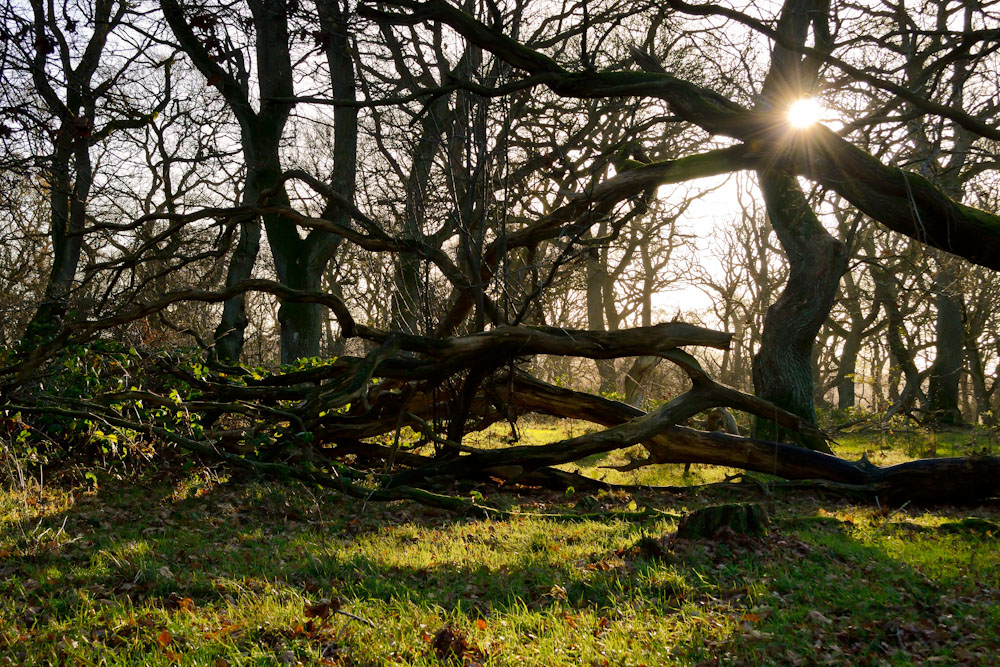Talk on nature and permaculture
STATE OF THE DANISH NATURE (AND SOCIETY)
Talk given at the technoshamanism encounter in Aarhus, November 22, 2014.
I wish to talk about the Danish nature, and I’d like to start by showing
you some pictures. The first pictures I’m going to show you were taken
by the writer and photogropher Rune Engelbreth Larsen who has been
working a lot on documenting the Danish nature as it is today.
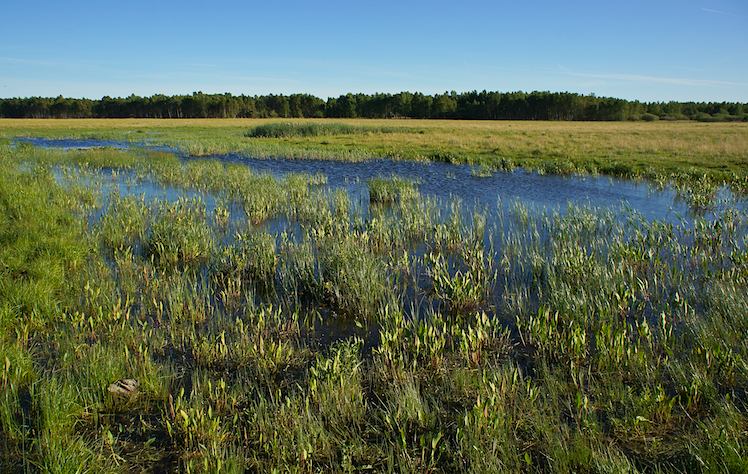 What you se here is of course a Danish forest with a lake, and if you
What you se here is of course a Danish forest with a lake, and if you
look at these pictures (which Rune Engelbreth has been dedicating
several years of his life to taking, making excursions and going to the
most remote corners of Danish nature) you’ll find that
many places in Denmark we actually have a rich nature
with very beautiful places, e.g. like this.
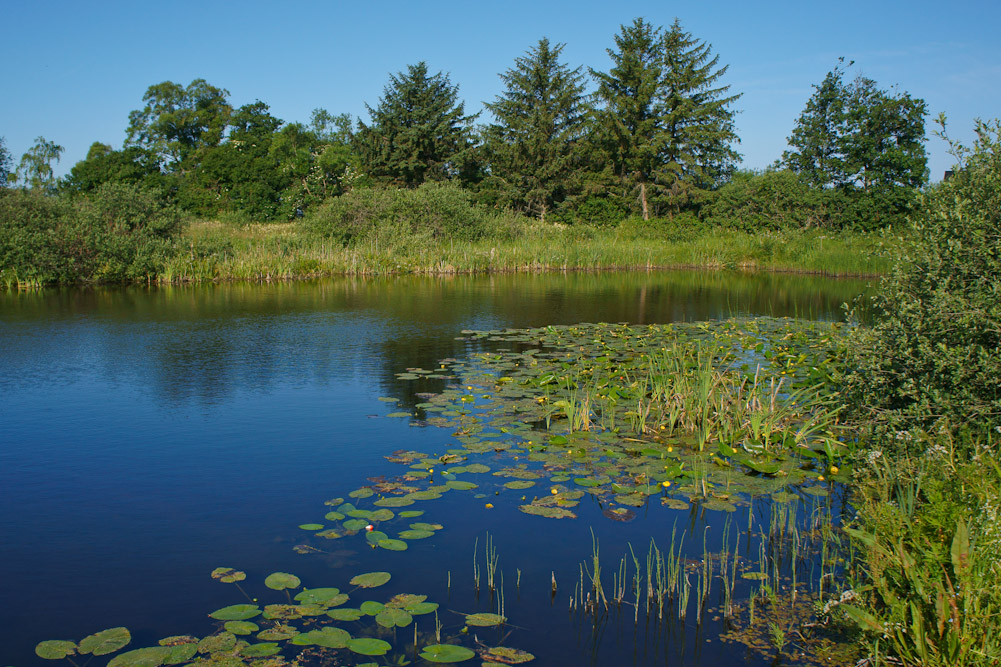 So if you visit a place like this and many others, you’d be forgiven for
So if you visit a place like this and many others, you’d be forgiven for
thinking that if there are so many wonderful places here in Denmark
where you can go to meditate and enjoy the nature, we must have a
beautiful and very diverse nature in this country. And it’s true –
you can indeed find places where you can
take such pictures. You can find many such places, also e.g. like this:
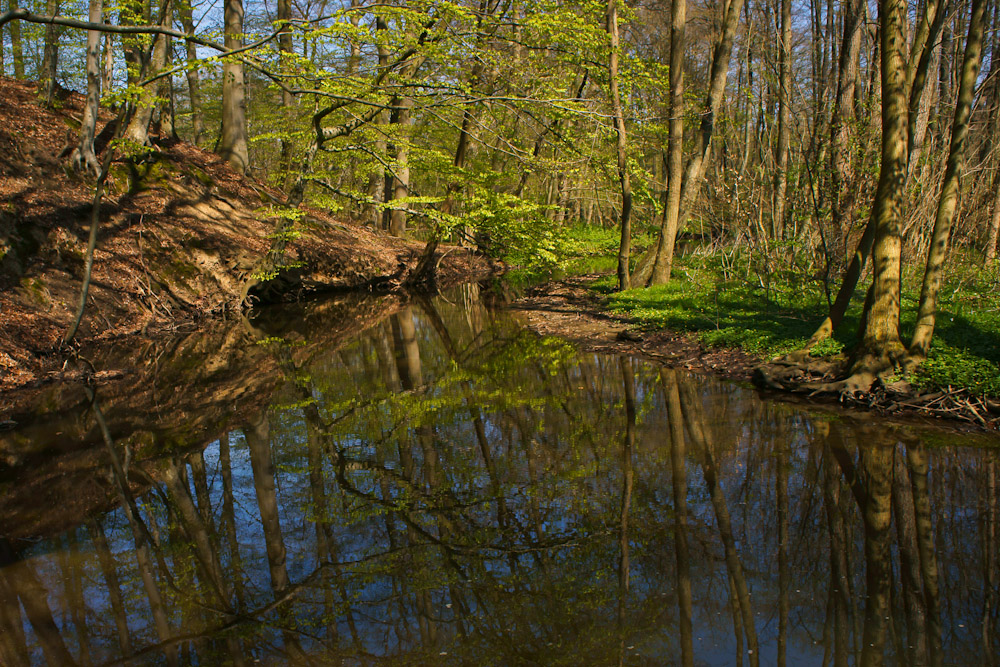 These examples of Danish nature are places with a really peaceful
These examples of Danish nature are places with a really peaceful
atmosphere. They are very green and very nice, usually with very
comfortable temperatures. If you visit some of the best places in Danish
nature, you’ll find that these are places that you can really feel a
part of, where you can relax and be happy and feel a strong sense of
belonging. As a Danish person I grew up with this kind of nature, and
I really feel at home in these tranquil spots. This is a landscape to
which I can really connect, spiritually.
In the photo above, you see one of our great oak forests, in Langaa.
Originally, Danish forests consisted mainly of oak trees; today, species
like beech, birch and fir are much more common. We don’t really
know why this forest has been conserved as oak, but in pre-Christian
times oak trees were connected to the ancient Nordic religion – the oak
is the tree of Thor. Thus, a very old oak forest like this one can also
help us connect to that part of our ancestral history.
However, if you look at other parts of the Danish landscape, a very
different picture emerges. The following pictures were all taken during a
walk that I took one day several years ago when I was living in
Solbjerg, a small town south of Aarhus. I walked around the lake called
Solbjerg Sø in one end and Stilling Sø in the other. There are, as you
can see, nice pastures along its banks that you can follow.
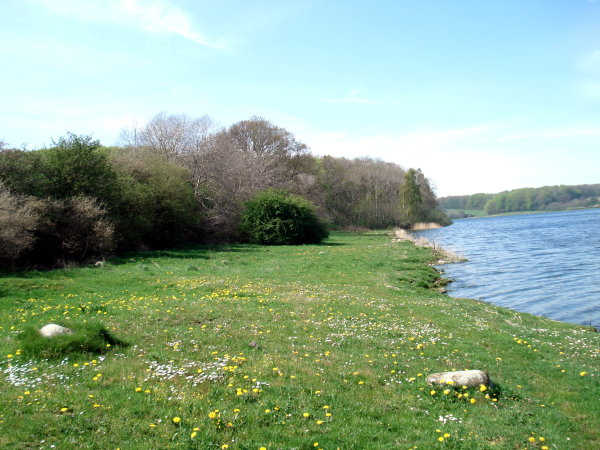 The trees that you see in the background are a small forest that’s also
The trees that you see in the background are a small forest that’s also
quite beautiful once you get inside.
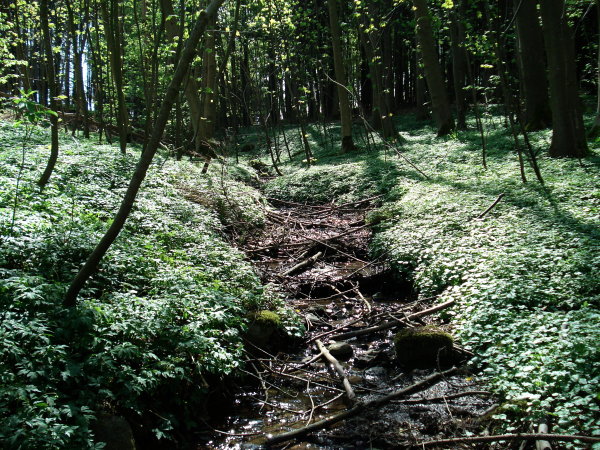 From there, you can go up a hill road and get a good view of the
From there, you can go up a hill road and get a good view of the
landscape (click to see the full panorama image).
 You have the hillside, the trees in the background, the
You have the hillside, the trees in the background, the
lake, and it’s all very nice, but: as pleasant as all of this might
appear, these pictures are actually lying. The first pictures I chose to
illustrate this article are truthful enough – they really do show some
very nice spots of Danish nature. But the pictures from my walk are
lying, all of them. Solbjerg Sø is situated in a completely agricultural
district, and the only reason there are green pastures at its banks is
that it’s too humid, so they can’t get their tractors all the way down
there. The trees at their edge form a hedge, and the corn fields start
right on the other side. In the autumn and winter, the pastures are
flooded and it’s nearly impossible to walk there. This is partly because
the lake’s water level is rising slightly, but mostly it’s because of
the drainage pipes that carry water from the fields on the hillside,
making them more tractor- and corn-friendly. This drainage water will
also carry excess fertilizer and pesticides which are sprayed on the
crop, all of which are flowing directly onto the pastures on their way
to the lake.
If you enter the forest on the other side of the lake – as I did that
day, since I walked all the way around the lake as close to the banks as
possible – you’ll se that it has been cut back and replaced with corn
fields as far down the slope as possible, right down to the point where
the ground becomes so humid that no matter what they do and how many
draining pipes they put in the ground, they still won’t be able to till
it and thus they can’t grow corn on it. The hillside is drained as far
down as possible, and the water from the fields is conducted to that
wood and makes it much too humid, creating a very bad climate in the
wood. The water from the fields is polluted with nutrients from the
chemical fertilizers used for the corn. This means that the wood by the
lake is overgrown with nettles, and otherwise the biological diversity
is nil. The high humidity does make it an ideal breeding place for
mosquitoes, though. As idyllic as that wood may look at a distance, it
really isn’t a nice place.
The area around Solbjerg Sø is a good example of a very idyllic but
completely destroyed Danish landscape. And this is the real state of
most of Danish nature these days.
On the other hand, if you look at the picture below, you’ll see a
typical Danish landscape. If you look at an aerial photo, you’ll find
that this is what Denmark is: Corn fields. You’ll see some tiny patches
of green dispersed in the landscape. These are forests that they haven’t
felled yet and some very few bogs that they were unable to drain
enough to sow corn.
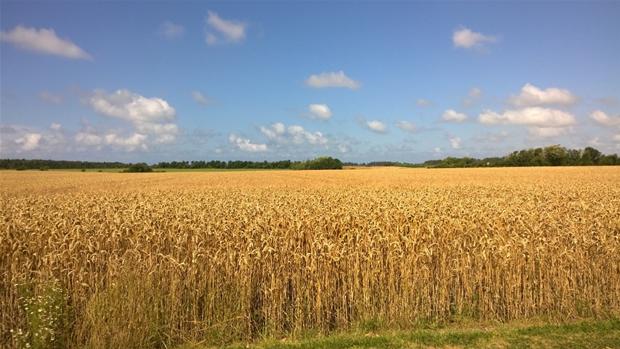 These landscapes are really dreary. What few people know is that Denmark
These landscapes are really dreary. What few people know is that Denmark
is the most heavily farmed country in Europe and one of the most heavily
farmed – and most destroyed – countries in the world.
My assessment of the situation is that, financially speaking, we’re
doing all of this for nothing. The most important crop on Danish corn
fields is barley, which is mainly grown in order to feed pigs and other
livestock. The real reason for having all these corn fields is that we
have to feed the pigs in the industrial pig farms so that we can export a
lot of pork meat.
Meanwhile, in these pig factories the pigs are being overmedicated. All
of them are usually treated preventively with antibiotics. This is
creating new antibiotic-resistant bacteria which may also infect humans.
Right now, there’s a bacterium originating in pig farms called MRSA
(Methicillin-resistant Staphylococcus Aureus) which is actually killing
people. In Denmark, four people died of MRSA infection from 2012 to
2014. In order to protect the pig farmers from “harm” (e.g., in the
form of consumer boykot), the government is keeping the outbreak
locations secret. This means that school classes may and do visit farms
with outbreaks of this deadly disease. The teachers are not allowed to
make a informed decision not to visit an infected farm, since that
information is confidential.
So this is the dilemma: Our agricultural production is destroying Danish
nature and undermining the health of future generations by creating
penicillin-resistant strains of bacteria which are already lethal in
some cases. At the same time, we don’t really have to produce food in
that way, because we don’t need to use all this space on corn fields in
order to feed ourselves. Most of our agricultural production is
exported. Of course, one might claim that we produce all this grain and
pork meat for sound economic reasons. The agriculture lobby is always
emphasizing this claim.
But the fact is that agriculture as practised in Denmark is not
financially sustainable. The only reason that Danish farmers survive
economically is that they’re heavily subsidized. If it weren’t for
subsidies, they would quickly go bankrupt. In other words, the present
overfarming is pointless. We’re sacrificing our country’s nature and
biological diversity to the very short-sighted interests of one single
profession whose productions methods are not even economically viable.
This is the first of the dilemmas I want to address: We’re destroying
our country in order to produce far more food than we need, and society
as a whole is losing money because of it. Meanwhile, there are many
environmentally and economically sustainable ways to produce food.
A related dilemma is that today’s consumer society is moving faster and
faster. This means that we as people are constantly pushed harder and
harder to perform. You have to do well in school, you have to get good
grades in secondary school, you have to work hard at the university, you
have to get a good exam. Once you get out you have to get a good job.
You’ll often have to be there at nine o’clock in the morning and stay
until five. In most jobs, you must be there during these hours or
you’ll get fired. If you get fired and you’re eligible for unemployment
benefit, society has all sorts of rules so you have to go to meetings,
attend “courses” and turn up at eight or nine o’clock in the morning
anyway. Only now you won’t get paid more than you need to barely keep
you from starving, so you better find a job soon! In other words, our
society isn’t free at all: We’re forced to become parts of consumer
society and we’re not actually free to choose not to be a part of it.
One way in which we could become more free to choose how to live would be
to become less dependent on money.
I’d like to propose that the two problems I’ve described right now – the
destruction of nature by unsustainable and unnecessary food production
and modern society’s endemic lack of personal freedom – have one single
solution. We, as individuals, can obtain the means to sustain ourselves
and each other without having to work for money in the way we do now.
It is theoretically possible for us to create a sustainable life and a
sustainable production of food and other necessities in such a way that
our society is and remains in balance with nature.
If we were to organize our food production according to the principles
of permaculture; that is, if we were to produce what we need in forest
gardens and carefully designed multicultures, we could avoid the use of
chemical fertilizers, pesticides and fossil fuels. In permaculture you
normally design your crops to balance and suplement each other, so you
don’t need to supply fertilizer – a careful selection of edible
perennials can help provide the nutrients they need and keep each
other’s pests and diseases away. The only monoculture crop we really
have to cultivate is wheat, since people do want bread. In order to
produce bread, we need about 500 square meters (organically farmed) for
each person, and that’s nothing compared to the area we’re currently
using for agriculture. Apart from that, we could organize our
agriculture entirely according to permaculture principles. We could
easily do without agriculture as an export industry, since it’s already
not actually making us any money, since it’s only profitable because
it’s subsidized. Giving up on the pig production, we could shrink the
agricultural land to a fraction of what it is today. Instead of using
60% of the country’s area for agriculture, we could feed ourselves with
just 10% of the space; and we could re-establish nature in the rest of
it.
That’s what we could do as a society if we want to transition to
something more sustainable. But we can also do something as individuals.
If we have the option we might, of course, shoot our proverbial uncle
in America and inherit all his millions – but most of us don’t have that
option. On the other hand, if we were to get cheap access to a garden –
I was lucky, as I was able to buy a house cheaply and I’m now building a
permaculture project there – we could put in a modest amount of work for
some years and afterwards we’d be able to get most of the food that we
need from that garden. It’s estimated that if you want to be
self-sufficient with food, you could get by with 400 square meters per
person, farmed very intensively. When I took my Permculture Design
Certificate, our teacher said that he wouldn’t try to do that himself –
he’d probably go for 800. But that’s still a moderately sized garden.
People could form communities with shared gardens – share the access,
share the cost, share the work, share the food – and you could have
communities of people who sustain themselves without ever spending any
money on food. So this transition is not just something we could do as
a society – we could do it ourselves and become vastly more independent
of having a job and being a part of consumer society. I’m not saying
this is the whole solution – there’s still some dependencies like how to
get the land in the first place – but it could be an important start for
many of us.
If you’re consuming pigs which have been produced by industrial
agriculture, then you’re also paying to have their fodder moved around,
you’re paying to have your fertilizers transported from abroad, you’re
paying to sustain a lot of carbon emissions. If you build a forest
garden in your own garden or help build a forest garden on a shared area
so that afterwards you can get most of your food from that forest
garden, you’re actually not emitting any carbon, you’re storing it. A
growing forest garden is actively removing carbon from the atmosphere
and storing it in the trees, in the roots beneath the ground and in all
the plants constantly growing in that garden. Calculations have been
made which show that if – and that’s a very big IF – we were to
transition to get a large part of our food from forest gardens and
sourcing that produce locally instead of having everything driven and
flown around, we would be able to take enough carbon out of the Earth’s
atmosphere to make a difference regardint the climate changes. I’m not
saying that this is going to happen because obviously it won’t, but we
could theoretically avert some of the dangers of climate change that
way.
Maybe we can’t save the world, but we can make ourselves more
independent and our lives freer and more fulfilling – and in doing so we
can at least try to contribute as little as possible to our own
destruction.
